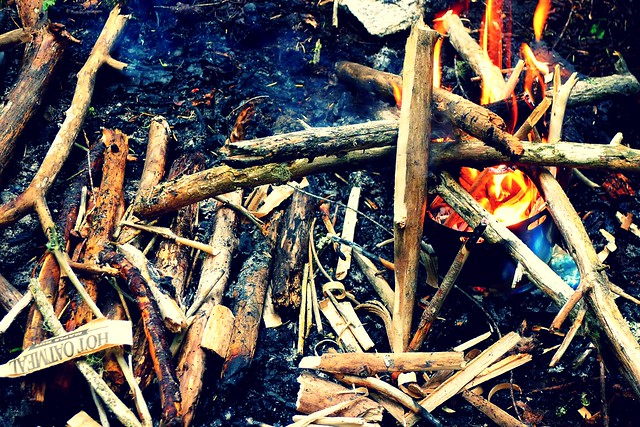Fire Starting with the Trail Designs Ti-Tri Inferno
On our last morning in the Red Buttes Wilderness, Avagdu and I woke up to a very wet camp. We wanted fire, but neither of us had brought any dry wood into our shelters the night before. Everything was soaked.
We gathered what we could – branches from dead fall that were up off the ground, as well as dead lower branches from standing trees – but the trees were so sparse in the area that, even after splitting, much of this wood was still wet. (I should mention that we wanted a fire, but did not need one. I, at least, was not hugely motivated to put a large amount of energy into batoning. So a small amount of our failure ought to be attributed to laziness.)
After failing to get a blaze going with the wet wood, even after using a bit of inner tube to extend the flame, I hit on the idea of using the Inferno.
I’ve had my Trail Designs Ti-Tri for two and a half years now. It’s been my primary stove system for all of that time. Last Fall, I contacted Trail Designs and had them send me an Inferno insert for the system. The Inferno consists of a second, inverted cone and a grate. The grate raises the base of the fire up off of the ground, allowing for an improved air flow, and the second cone creates a double-walled stove. This turns the Ti-Tri into a wood gassifier, similar to the Four Dogs Bushcooker or the ever-popular Bushbuddy.
So, back at camp, I thought the Inferno might help. I had never used it before solely to start a camp fire, but I knew from previous experience using it to cook my dinner that it was efficient enough to burn damp wood. It would give us a raised platform, allowing us to build the fire up off of the saturated ground, and the cone would provide a wall to keep the heat in and help dry the wood.
It was a success.
We split a bit more wood, and did a bit more feathering. It was all still as damp as before, but shortly we achieved a small blaze inside the Inferno. From there, it was simply a matter of building the fire up and around the Inferno. With the heat put out by the cone, even the wet, unprocessed wood would dry and burn. As the fire built up, the Inferno could be pulled out with a multi-tool or a couple sticks, and packed away with the rest of the Ti-Tri, ready to cook the next meal.
The weight of the Inferno insert varies. It is dependent on the size of the outer Caldera cone, which in turns varies based on the size of the pot. For my system, which is built around a 900mL pot from Titanium Goat, the pieces that comprise the Inferno weigh in at a collective 38 grams (1.34 ounces). Given that it not only increases the Ti-Tri’s efficiency as a wood burning stove, but also functions as an emergency fire starter, I’m happy to haul the extra weight.
